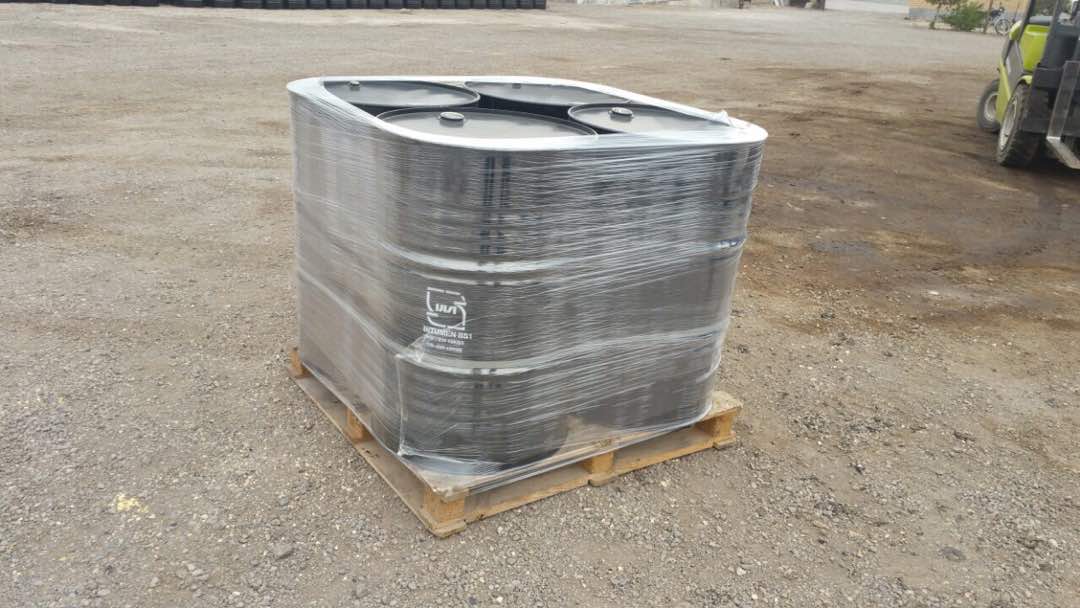
Cutback bitumen MC-800

General information of cutback bitumen MC-800
Cutback bitumen MC-800 is dissolved of bitumen in solvents of kerosene. In many countries, kerosene and other volatile petroleum-derived products are added as a cutter or cutback agent to bitumen to reduce (or cutback) the viscosity of the bitumen. The mixture obtained may be called cutback bitumen.
The reduction in viscosity of the bitumen aids the construction of seal coats in road pavements as the softened mixture wets the chips more easily. The cutback agent evaporates from the seal coat, the cutback agent becoming a negligible component of the seal coat a few months after application. If significant amounts of the cutback agent remain in the seal coat an unwanted long-term softening effect may result.
Our Cutback Bitumen MC-800 complies with cutback petroleum asphalts of the Medium-Curing type for use in the construction and treatment of pavements as per ASTM D2028-97 reapproved in 2004. Cutback Grade Bitumen is normally used in spraying and in some mixing applications. Cutback Bitumen is penetration grade bitumen blended with a solvent such as kerosene, white spirit, gasoline, and naphtha, controlling the curing time. Cut back petroleum asphalts of the rapid curing type supplied by RABIT (RAHA BITUMEN) Co are petroleum grade bitumen manufactured from the fractional / vacuum distillation of crude oil blended with a solvent. Bitumen supplied by RABIT Co is produced from the vacuum residue (short residue) feedstock. Penetration Grade bitumens are specified by the penetration and softening point test. The designation is by penetration range only. The penetration grade bitumens have a thermoplastic property which causes the material to soften at high temperatures and to harden at lower temperatures. This unique temperature/ viscosity relationship is important when determining the performance parameters such as the adhesion, rheology, durability, and application temperatures of bitumen. The cutback bitumen (Asphalts) supplied by RABIT are blended from petroleum grade bitumen as stated herein.
Uses of cutback bitumen MC-800
Current common uses are in penetrating prime coats and in producing patching or stockpile mixtures. Cutback asphalt used in mixing with aggregate will usually contain an adhesion agent to assist in the coating of the aggregate surface.
Cutback agents are used to lower the viscosity of bitumen when it is applied as a primer to the surface of a road pavement aggregate base course or substrate. Kerosene is used as a bitumen cutback agent at different concentrations according to local conditions and requirements.
The cutback bitumen is ideal for prime coat and cold applied because of easy uses and no need to thinning and heating.
Cutback bitumen MC-800 consist of initial incorporation of asphalt into the surface of non-asphalt based course preparatory to any superimposed treatment of construction.
The cutback asphalt MC800 applying to waterproofing of surfaces, plug capillary voids, coat and bond loose mineral particles.
Packing of cutback bitumen MC-800
Packing of cutback bitumen MC-800 is in the new thick steel drum on the pallet to prevent any leak inside of container also bulk in bitutainer and tanker.
Safety of cutback bitumen MC-800
Refer to Safety Data sheets before use.
Transport, use and store at the lowest temperature possible.
Eliminate all potential ignition sources during application.
Avoid breathing vapors. Avoid contact with skin.
Always wear appropriate PPE including heat protection when used hot.
DO NOT allow product or washings to enter stormwater or sewer systems
Specification of cutback bitumen MC-800
RABIT (RAHA BITUMEN) Co. guarantees that the Medium Curing CutBack Grade MC-800 it supplies under its offers is produced in compliance to and is in conformity to ASTM D-2028–97 Rev 2004 and is compliant to the following specification requirements.
| property | specification limit | Test method | |
| Min | Max | ||
| Kinematic viscosity at 60°C ,cST | 800 | 1600 | ASTM D2170 |
| Flashpoint(tag open cup), °C | 66 | ASTM D3143 | |
|
Distillation test |
|||
| to 437°F (225°C) To 500°F (260°C) to 600°F (316°C) Residue from distillation to 680°F (360°C), percent volume by difference |
— | — |
ASTM D402
|
| — | 40 | ||
| 45 | 85 | ||
| 75 | — | ||
| Test on Residue from distillation test | |||
| Viscosity at 140°F (60°C) | 30 | 120 | ASTM D2170 |
| Penetration 77°F (25°C) 100g,5s mm | 120 | 250 | ASTM D5 |
| Ductility 77°F (25°C) 5cm/min cm | 100 | — | ASTM D113 |
| Solubility in trichloroethylene % | 99 | — | ASTM D2042 |
| Water, percent volume | — | 0.2 | ASTM D95 |

